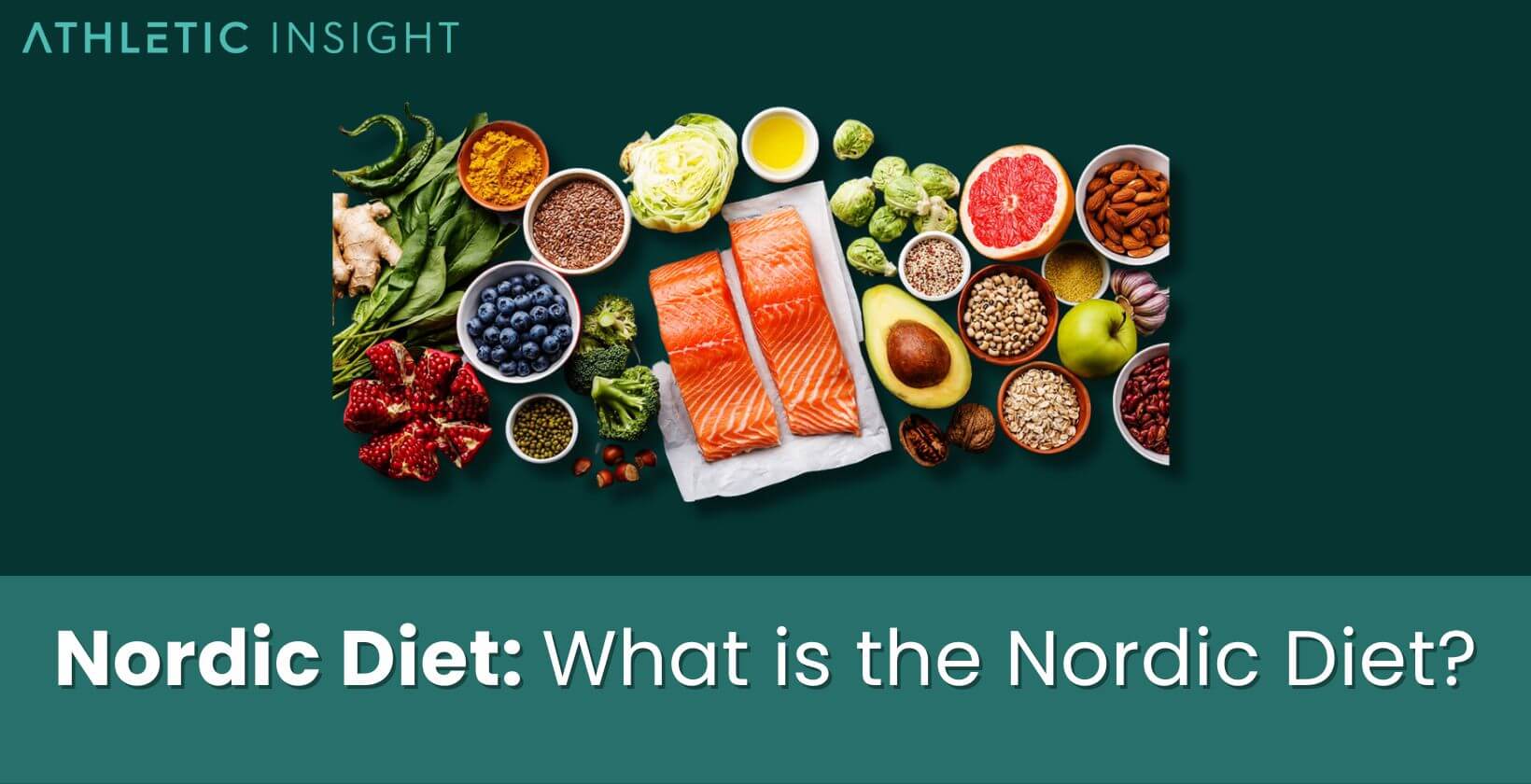Navigating the world of diets can be an overwhelming experience with the myriad of choices available. Yet, one diet that seamlessly merges health, weight loss, and sustainability is the Nordic Diet. This traditional northern European approach to nutrition might just be the lifestyle change you’ve been searching for. With a focus on locally sourced, in-season foods laden with complex carbohydrates, proteins, and healthy fats, is the Nordic Diet right for your lifestyle?
What is the Nordic Diet?
The Nordic diet finds its roots in the culinary traditions of Nordic countries such as Norway, Denmark, and Iceland. This diet emphasizes the intake of plant-based and seasonal foods rich in protein, complex carbohydrates, and healthy fats similar to the Mediterranean diet, thus making it a popular choice for many health-conscious individuals. You’ll find ample fruits (especially berries), vegetables, and seafood on a traditional Nordic diet plan.
Due to its focus on whole foods sourced from local and seasonal produce, the Nordic diet shares similarities with other traditional diets. Yet, it stands out by encouraging exploration of local farmers markets and embracing the foods unique to the Nordic regions. From enjoying hearty, high-protein breakfasts to discovering new, in-season vegetables at your local market, the Nordic diet offers a fresh perspective on healthy, sustainable eating.
Notably, certain foods, just like in other diets, are to be consumed sparingly. However, the overall emphasis is a balanced and nutritious diet that can help improve health and wellbeing. Plus, there’s a diverse range of related topics, from inexpensive healthy food choices to the potential dietary impact on treating psoriasis, that all tie back into the central theme – the effectiveness of the Nordic diet.
What are the guiding principles of the Nordic diet?
In its essence, the Nordic diet revolves around whole foods that are native to Nordic regions. Countries such as Norway, Denmark, and Iceland have developed diets rich in proteins, complex carbohydrates, and healthy fats.
Starting from your first meal of the day, think about incorporating elements of this healthy Nordic diet. A typical Nordic meal plan might include a breakfast of rye bread and fruit, followed by a lunch of a hearty vegetable soup, and finally ending with a dinner of fish accompanied by root vegetables and whole grains.
The guiding principle here is not just to eat Nordic, but to make conscious, healthy choices throughout your day and prepare meals from scratch wherever possible. It encourages you to enjoy a variety of plant-based, seasonal foods. While fresh fruits, especially berries, and vegetables form integral components, seafood also holds a strong place within this diet.
One of the key differences between other diets and the Nordic diet is this emphasis on seasonal produce, advocating for locally sourced ingredients. Just as the review suggests, this could open up new opportunities for you to explore local farmer’s markets, appreciating the bounty that each season has to offer.
While this might require a shift in your current eating habits, it could present an exciting and healthful way to diversify your diet. Bounty and variety are cornerstones of the Nordic diet, evoking a sense of culinary adventure and appreciation for the natural offerings of the local environment.
What are the key food items in the Nordic Diet?
The Nordic diet, akin to the Mediterranean diet, is an aggregation of whole foods found predominantly in Nordic regions like Norway, Denmark, and Iceland. Introducing the quintessential traditional Nordic food involves a focus on seasonal staples sourced locally. An abundance of fresh fruits, particularly berries, and an array of vegetables punctuate the food list of the Nordic diet.
Delving deeper into typical breakfast, lunch, and dinner glimpses the heart of the Nordic cooking ethos. Robust Nordic diet breakfast items range from oats draped in fruit compote to rye bread with fish and local cheese. When it comes to a casual Nordic diet lunch, expect to be greeted by wholesome, grain-rich bowls. They often feature ingredients like barley, beetroot, and kale, lightly intermixed with seafood or poultry. As for Nordic diet dinner options, they are well-embellished with fresh fish, root vegetables, and wild herbs, all prepared in modest, heart-warming ways.
Emphasizing seafood, you’d discover varieties like herring, mackerel and salmon, taking center stage in many Nordic dishes. Bay leaves, fennel, parsley, and dill, and a host of aromatic seasonings make up the soulful, flavorful journey through the Nordic cuisine. Almost all the items are available in one comprehensive nordic diet food list pdf for your reference.
In a nutshell, the Nordic diet offers a sustainable, wholesome, and flavorful option to satiate your curiosity for worldwide culinary traditions while inculcating healthier habits. It’s safe to say that it does quite justice to the saying—food is where the heart is. The above explanation doesn’t just answer ‘what,’ but it also subtly unveils the ‘why’ behind the popularity of the Nordic diet, building a bridge to the subsequent sections of this insightfully guided tour.
What are the health benefits of the Nordic diet?
Renowned for its health benefits, the Nordic diet is often likened to the Mediterranean diet, both brimming with whole foods unique to their respective regions. Researchers spotlight its potential in weight loss journeys and cholesterol management, features which are validated by an abundance of scientific research. Foods abundant in protein, complex carbohydrates, and healthy fats — seasonal fruits, in particular berries, vegetables, and seafood — make up its backbone. The emphasis placed on locally sourced, in-season whole foods lends further credibility to its healthfulness.
Alongside your weight loss experience, the Nordic diet’s potential to lower your cholesterol may open up a world of improved health outcomes. However, every lifestyle change should be sustainable, and what works for one may not yield the same results for another. So, is the Nordic diet right for your lifestyle? An informed decision hinges on a comprehensive understanding of its potential benefits and what it entails from you.
Is the Nordic diet environmentally sustainable?
When you’re considering the Nordic diet, one of your considerations might be it’s impact on the environment. Rooted in locally sourced and in-season whole foods, the Nordic diet plan illustrates how personal health and environmental wellbeing often coincide.
Your stewed berries, whole grain bread, and root vegetable soup don’t have to travel long distances, reducing the carbon footprint of your meals. Pairing this diet with the practice of frequenting farmer’s markets and supporting local producers also contributes to sustainable agriculture and local economies.
Even when compared to other popular diets, the Nordic meal plan is generally considered more eco-friendly due to the emphasis on local, in-season produce, and its moderate-to-low intake of animal-foods. So, while satisfying your palate the Nordic way, you’re also contributing to the wellness of our planet.
What foods should be avoided in the Nordic diet?
When following the Nordic diet, certain foods should be minimized or avoided altogether. These typically include processed foods, fast foods, sugary snacks and drinks, and refined grains. The goal instead is to fuel your body with whole, nutritious foods rich in vitamins, minerals, and fiber, much like the principles of other health-centric diets.
Heavily processed meats, like hot dogs or certain deli meats, also do not fit into the Nordic diet. Even if you’re opting for a vegetarian Nordic diet, you’ll want to select whole grain, unprocessed foods. On occasion, you may find it difficult to source certain foods within this diet, especially if they are not in season. By adapting and focusing on in-season veggies or substituting items from the accredited Nordic diet food list, you can ensure that you are still following the core principles of this diet.
Remember, the key to a successful and healthy diet lies in moderation and choosing nutrient-dense foods over empty calorie ones. Avoiding items that don’t align with the Nordic diet will guide you towards a healthier lifestyle.
Are there any cons to the Nordic diet?
In depth discussions about diets can’t be complete without highlighting any potential downside. With the Nordic diet, you might face difficulties, especially if you live outside the Nordic countries. For one, sourcing traditional ingredients like the unique Arctic berries or certain types of fish can prove to be a challenge.
Besides accessibility, there could be health considerations for some individuals. With its emphasis on seafood, those with shellfish or certain fish allergies must exercise caution. It’s worth noting that the ancestral Scandinavian diet significantly varies from the Nordic diet developed in the 21st century.
While comparisons to other diets, like the popular Mediterranean diet, often show the Nordic diet in a favorable light, it requires a positive approach to home cooking and dedication to sourcing locally—that might not be ideal for everyone.
What does a Nordic diet meal plan look like?
To follow a Nordic diet meal, start off with a wholesome Nordic diet breakfast fused with traditional recipes. A menu bursting with oats, fresh berries, yogurt, and perhaps a slice or two of rye bread should be more than enough to fuel your day.
Next, lunch, larger portions of leafy greens, with a variety of colorful vegetables and lean proteins like beans or fish. Round off your Nordic diet meal plan with a hearty dinner combining whole grains, fish or legumes, and plenty of fruits and vegetables.
With just a minor modification or substitution, you can adapt this diet to suit specific dietary needs. So, explore local farmers’ markets and enjoy the benefits of following the Nordic diet. Wondering what the full week might look like? A 7-day Nordic diet meal plan could be your next kitchen and health adventure.



